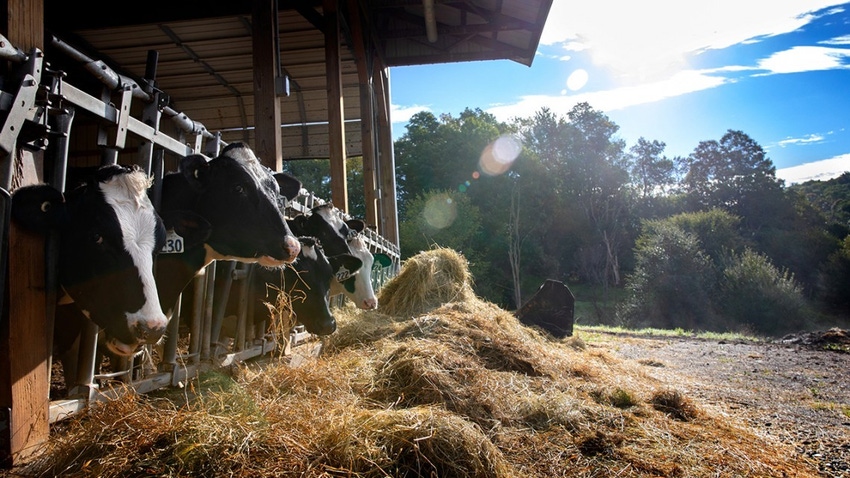CNCPS can be used to assess environmental impact of dairy cattle and to help nutritionists improve utilization efficiency of diets and cattle in environmental context.

While the Chesapeake Bay may lie about 235 miles down the Susquehanna River from New York’s "Southern Tier" region, a recent research study shows how new updates and improvements to a dairy nutrition model developed at Cornell University may help reduce nutrient pollution in the bay and other waterways.
The Cornell Net Carbohydrate & Protein System (CNCPS) nutrition model helps dairy farmers determine what to feed dairy cows to make milk production more efficient and environmentally friendly. While less nitrogen makes its way into the manure and subsequent rain runoff flowing into the bay, farmers also might save money, according to the research published in the journal Applied Animal Science, formerly known as The Professional Animal Scientist.
Through on-farm research in Broome, Tioga and Delaware counties in New York, co-authors Michael Van Amburgh, professor of animal science, and Larry Chase, professor emeritus of animal science, found that farmers can feed cows less protein, maintain a cow’s milk production output and reduce nitrogen in the manure so that the nutrient does not run off into waterways and lakes, an announcement from Cornell said.
“I call it a win-win. The dairy farmers win because the cow is more efficient and more profitable. Society wins because we’re now putting fewer nutrients back into the environment or into the water than we would have had we not made the adjustments,” Chase said.
Cows at the eight farms studied in the New York counties averaged about 14% less nitrogen in their manure, the researchers said. On one 50-cow farm, the researchers found that the initial amount of protein in the feed was 16.3%. Using the updated CNCPS program, the amount dropped to 14.9%. In the farm’s manure output, 1,607 lb. less nitrogen went into the environment annually, with no change in milk production, Chase and Van Amburgh added.
On a 565-cow farm, the protein feed input dropped 1%, which resulted in nearly 80 g less nitrogen in the cow manure daily; this reduced nitrogen excretion by 18.6%, the researchers said, which translates into 35,916 lb. less nitrogen placed into the environment annually -- again, without negatively affecting milk yield.
In their research, Chase and Van Amburgh noted that reducing the protein portion of the feed to enhance efficiency also saves farmers money. Using 2017 feed prices as a base, a farmer can save between $147 and $157 per cow annually.
“We are improving the economic margin of dairy farms while at the same time reducing nitrogen output and helping the environment. We’re all better off,” Van Amburgh said.
CNCPS can be used to assess the environmental impact of dairy cattle and by nutritionists to improve the utilization efficiency of diets and cattle in an environmental context, including methane and carbon dioxide emissions, the researchers said in the article abstract.
In addition to Van Amburgh and Chase, Kristen Russomanno and Ryan Higgs were co-authors of “Modifications to the Cornell Net Carbohydrate & Protein System Related to Environmental Issues — Capability to Evaluate Nitrogen & Phosphorus Excretion & Enteric Carbon Dioxide & Methane Emissions at the Animal Level.”
The New York State Department of Agriculture & Markets funded a portion of the research.
About the Author(s)
You May Also Like

.png?width=300&auto=webp&quality=80&disable=upscale)

